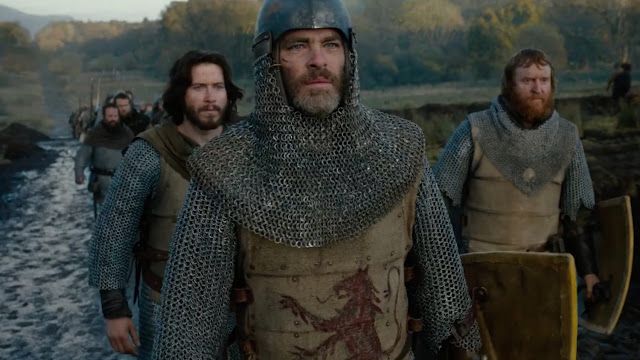
Outlaw King
Carrick, Lochgilphead, ScotlanIt is still uncertain where Bruce spent the winter of 1306–07. Most likely he spent it in the Hebrides, possibly sheltered by Christina of the Isles. The latter was married to a member of the Mar kindred, a family to which Bruce was related (not only was his first wife a member of this family but her brother, Gartnait, was married to a sister of Bruce). Ireland is also a serious possibility, and Orkney (under Norwegian rule at the time) or Norway proper (where his sister Isabel Bruce was queen dowager) are unlikely but not impossible. Bruce and his followers returned to the Scottish mainland in February 1307.
In February 1307 King Robert crossed from the island of Arran in the Firth of Clyde to his own earldom of Carrick, in Ayrshire, landing near Turnberry, where he knew the local people would be sympathetic, but where all the strongholds were held by the English. He attacked the town of Turnberry where many English soldiers were garrisoned inflicting many deaths and gaining a substantial amount of loot. A similar landing by his brothers Thomas and Alexander in Galloway met with disaster on the shores of Loch Ryan at the hands of Dungal MacDouall, the principal Balliol adherent in the region. Thomas and Alexander's army of Irish and Islemen was destroyed, and they were sent as captives to Carlisle, where they were later executed on the orders of Edward I. King Robert established himself in the hill country of Carrick and Galloway.
King Robert had learned well the sharp lesson delivered at Methven: never again would he allow himself to be trapped by a stronger enemy. His greatest weapon was his intimate knowledge of the Scottish countryside, which he used to his advantage. As well as making good use of the country's natural defences, he made sure that his force was as mobile as possible. King Robert was now fully aware that he could rarely expect to get the better of the English in open battle. His army was often weak in numbers and ill-equipped. It would be best used in small hit-and-run raids, allowing the best use of limited resources. He would keep the initiative and prevent the enemy from bringing his superior strength to bear. Whenever possible, crops would be destroyed and livestock removed from the path of the enemy's advance, denying him fresh supplies and fodder for the heavy war horses. Most important of all, King Robert recognised the seasonal nature of English invasions, which swept over the country like summer tides, only to withdraw before the onset of winter.
